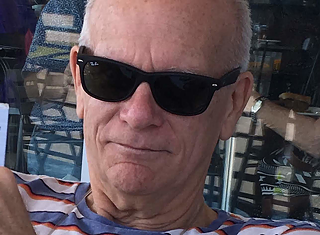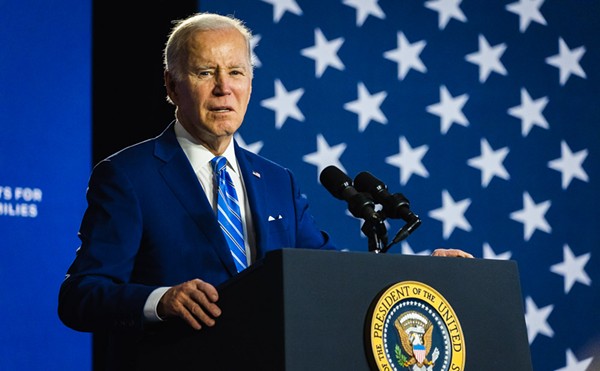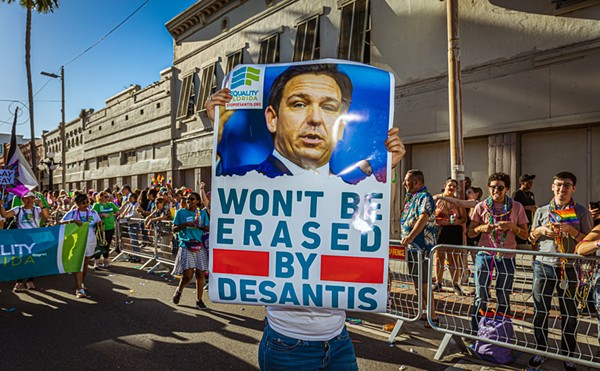My editor gets intrigued by the damnedest things. After listening to me muse about my fading basketball prowess, he green-lighted a story about it. He suggested I talk to some other aging athletes, and also get perspectives from sports psychologists and physiologists. "I'm sure a lot of our readers are going through this very same thing," he said. "And if not, a lot of them will be."
Hmm. Interview a bunch of other athletes. Get some gratis tips from doctors, trainers and the like. Heist free therapy from shrinks. Yeah, I thought, I can do that. Do I still get a paycheck?
I discovered that I'm definitely not alone on this over-the-hill issue. All those platitudes about how one can't defeat aging, that it's just a natural process, that I've had a better run than most, that I should look at every opportunity to play as a blessing — it so happens that other aging athletes don't take much solace in them either. The roads, courts, pools, tracks and fields of Tampa Bay are flush with stories about people dealing with athletic mortality. There's a handful in the sidebars to this story.
Most of us understand aging in very general ways, via wrinkles in the mirror, aches and pains when we get out of bed, a loss of the old get-up-and-go. But what are the physiological manifestations? What really happens beneath the skin that causes me to jump a whole lot lower than I used to?
Here are some factors, or — if you prefer — the grim details (the basic information comes from an article written by Dr. John E. Morley for the website thedoctorwillseeyounow.com):
* As we get older, our maximum heart rate decreases, as does the amount of blood the heart can pump. Both of these limit athletic performance. Aging causes a drop-off in overall lung capacity; and we can't move oxygen from the air into our bloodstream as efficiently. Result: Less strength and endurance.
* Older jocks lose muscle strength and muscle mass, which can be offset by exercise but not conquered. Most of the decline occurs in Type II, or "fast twitch" muscles, which are associated with strength and power. Type I muscles, which contract slowly and are tied to endurance, do not deteriorate as fast. This would explain why aging basketball players have a tougher go of it than long distance runners or swimmers.
* A big issue for men is the decrease in testosterone production as the body gets older. "One of the primary functions of the hormone is to signal regeneration of muscle tissues," says Rob Wagner, head strength and conditioning coach at University of Pennsylvania in Philadelphia. "The loss of testosterone causes increased recovery time for men."
Not employing sufficient recovery time can increase the chance of injury, which is probably the main bugaboo of long-in-the-tooth athletes. "Your brain tells you and your ego tells you that you can still do it," Wagner says. "We tend to listen to that instead of listening to our bodies. They're not up to the optimal level, but we want to push to that level. That's a recipe for injury."
Wagner adds that it's not just big, or even noticeable, injuries that can slow us down. Over the years, we accumulate lots of "microtraumas" in our bodies, which cause scar tissue. "If the [scar tissue] is never manipulated out of the muscle, through massage or extensive stretching," he says, "it limits muscle function, impedes speed and flexibility."
Age in general hinders flexibility, largely because of degeneration in the connective tissue. Reduced flexibility means that joints bear more stress during exercise, which can create havoc on knees, hips, shoulders, ankles and the like.
The good news is that these factors usually occur more profoundly in people who are not active. While athletes still experience these physiological breakdowns, as a rule they experience more strength and vitality in their later years — even as their performance declines.
Two sports psychologists told me I have a "high athletic identity."
"You saw yourself as a basketball player, saw yourself as an athlete," says Dr. Robert Harmison, head of the Sports-Exercise Psychology department at Argosy University in Phoenix. "That just doesn't go away when you get older."
In the sports psychology matrix, there are several types of athletes. Harmison characterized me as "competitive/recreational," a pretty big group of jocks.
In my discussions with three shrinks, I came to realize that a good portion of my self-esteem is wrapped up in basketball. Even now, the idea seems a little absurd, or at least immature. I'm a grown man with family, job and friends, after all. But it's simply true that my status as an "old dude who's still got serious game" remains important to me. I get a visceral high out of winning and playing well that I really can't find anywhere else.
















